
Changing lives one chef at a time at a Spokane nonprofit
Games and puzzles related to this issue A love letter to farm laborers in Washington
Five generations of fruit along the Columbia
magazine
DELICIOUS CHERRYFILLED PASTRY
LaborLove of a magazine
RECIPE INSIDE

2 WASHINGTON GROWN MAGAZINE JUNE 2024

Farms need workers. Workers need farms. Everyone needs food.
by the WASHINGTON GROWN MAGAZINE EDITORIAL TEAM
WASHINGTON STATE IS ONE OF THE MOST BOUNTIFUL AGRICULTURAL REGIONS IN THE WORLD. From the rich fields of the Skagit Valley to the wheat-covered, rolling hills of the Palouse, our state is blessed with an abundance of good soils, a perfect climate for growing crops, and abundant water – whether from rainfall or from irrigation projects along our many rivers. But our grocery shelves would not be stocked and our plates would not be full if not for the people who work hard every day to care for our food and the lands where it is raised. From the laborers in the orchards and fields keeping crops free from pests and harvesting at the peak of freshness, to the researchers who study crop and soil conditions and make recommendations, our bountiful agricultural system would collapse without the people involved.
Agriculture is a labor-intensive industry, and farm labor has been an integral part of the entire ecosystem for decades. Labor is a hot topic in Washington, and the situation is complex. Many farm laborers are "local workers," individuals and families that live in Washington's small farming communities and work regularly on farms nearby. Data from Washington's Employment Security Department shows that the use of "migrant labor" has dropped by 37% in the last five years. In the same time period, the number of farmworkers employed through the H-2A guest worker program, which allows employers to bring in foreign workers to fill temporary agricultural jobs, has nearly doubled.
WASHINGTON GROWN MAGAZINE JUNE 2024 3

Those three groups of laborers (local workers, migrant workers, and H-2A guest workers) make up the vast majority of farm labor employment in Washington. On the whole, their work in our fields and orchards is good for the laborers and their families, it's good for our farms, and it's good for the world.
As machinery, computers, and GPS have changed how laborers do their jobs, they are still critical to a farm's success. Farmers trust workers with thousands, if not millions, of dollars in equipment, plus the millions of dollars invested in each crop. This is especially true for fruit farms, where farms employ four times as many laborers as other types of farms. The trust between farm owners and workers is incredible, and it's part of the unique culture within agriculture.
On many Washington farms, the same farmworkers return year after year. Many of them have been a part of the farm for years and are considered part of the family. Many workers also bring relatives and the next generation with them when they return for the season. Farmers create tight relationships with their workers, and it's often a relationship that is passed down from one generation to another. The importance of multigenerational farms goes beyond the owners. Laborers
Many of Washington's most prized crops are picked by hand at the peak of freshness to ensure their soft flesh is not bruised.
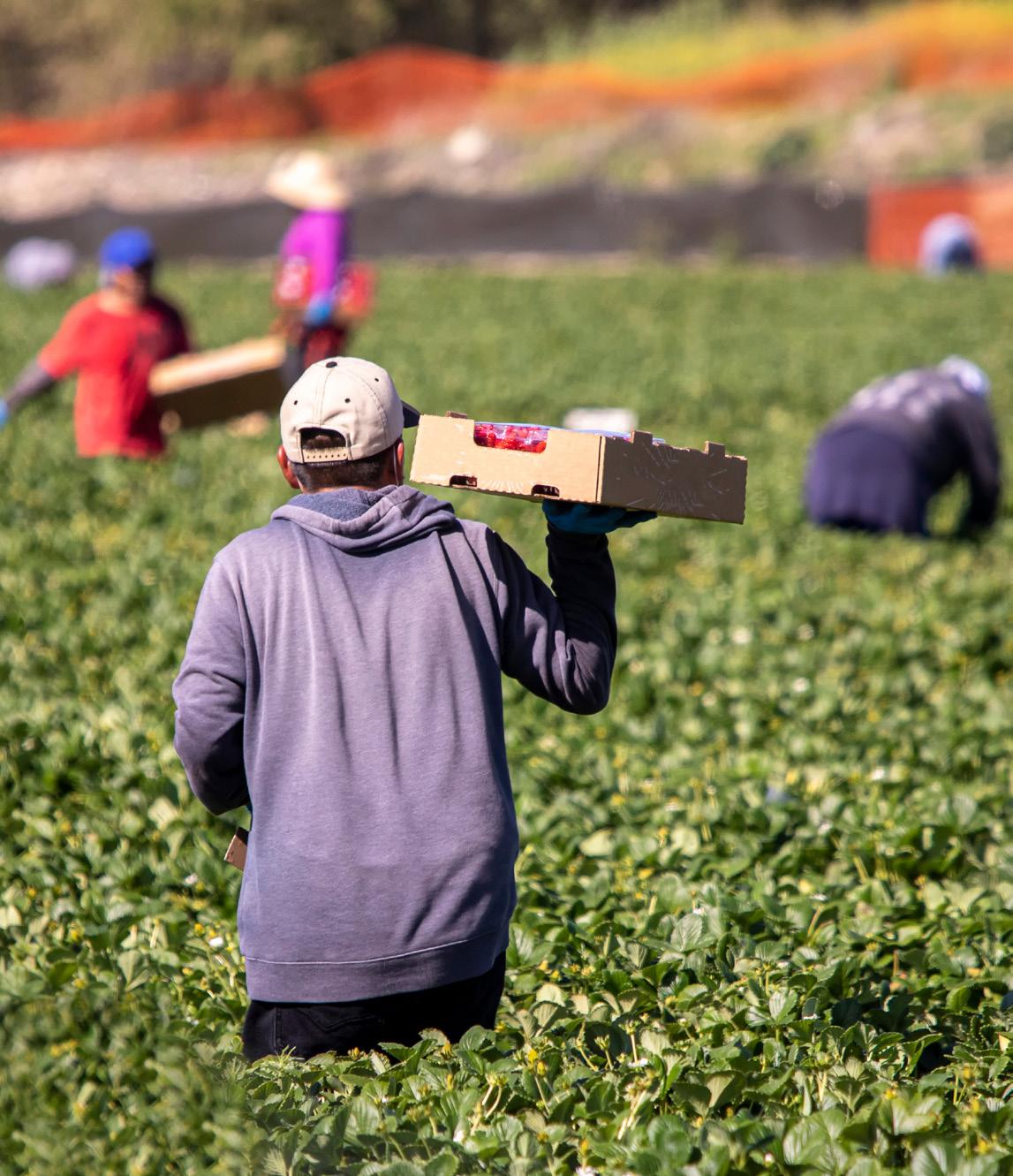
and owners have worked together for generations, and they have a mutual respect for each other. They both need each other.
Without dependable farm labor, Washington simply would not be the bountiful growing region that it is. Without experienced, hard-working pickers, our crops of cherries, apples, blueberries, raspberries, pears, and plums would be decimated and diminished. Farmers would not be able to produce enough of their crops to feed the world. If not for dependable labor, many farms from the Yakima Valley to the Columbia Basin might cease to exist at all.
The farm isn't just a place or a 9-to-5 occupation. It is a life. And it takes many people to make it successful. Since humans began harvesting food through gathering native plants or by growing specific crops, it's been hard work. How do we value that? No matter how technologically advanced equipment and systems become, there will always be an element of grit, tenacity, and labor required. As people who depend on Washington's food supply, we are so thankful there are farmers and workers who are willing to work hard and ensure our food is as safe, affordable, and delicious as possible.
4 WASHINGTON GROWN MAGAZINE JUNE 2024
Find more great stories at wagrown.com

"Their family came to Red Mountain on a coin flip. But their success here has nothing to do with chance."
Read more at wagrown.com

"Her parents were farmworkers. Now she owns the farm."
Read more at wagrown.com

Watch the show online or on your local station
KSPS (Spokane)
Mondays at 7:00 pm and Saturdays at 4:30 pm ksps.org/schedule/

"We've got a responsibility to take care of it for future generations."
Read more at wagrown.com
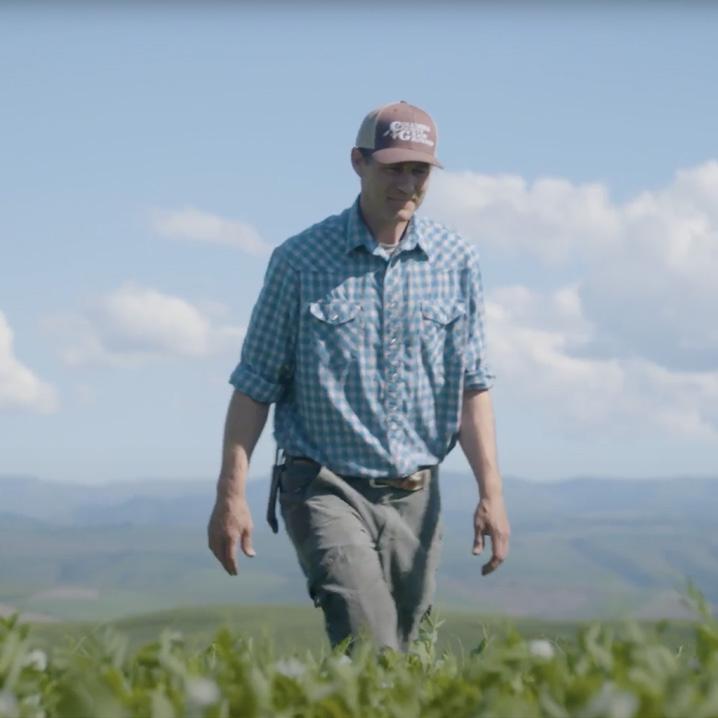




KWSU (Pullman) Fridays at 6:00 pm nwpb.org/tv-schedules/
KTNW (Richland) Saturdays at 1:00 pm nwpb.org/tv-schedules
KBTC (Seattle/Tacoma) Saturdays at 6:30 am and 3:00 pm kbtc.org/tv-schedule/
KIMA (Yakima)/KEPR (Pasco)/KLEW (Lewiston)
Saturdays at 5:00 pm kimatv.com/station/schedule / keprtv.com/station/schedule klewtv.com/station/schedule
KIRO (Seattle)
Saturdays at 7:30 am and Mondays at 2:30 pm or livestream Saturdays at 2:30 pm on kiro7.com kiro7.com
NCW Life Channel (Wenatchee)
Check local listings ncwlife.com
RFD-TV
Thursdays at 12:30 pm and Fridays at 9:00 pm (Pacific) rfdtv.com/
*Times/schedules subject to change based upon network schedule. Check station programming to confirm air times.
WASHINGTON GROWN MAGAZINE JUNE 2024 5 wagrown.com @wagrowntv
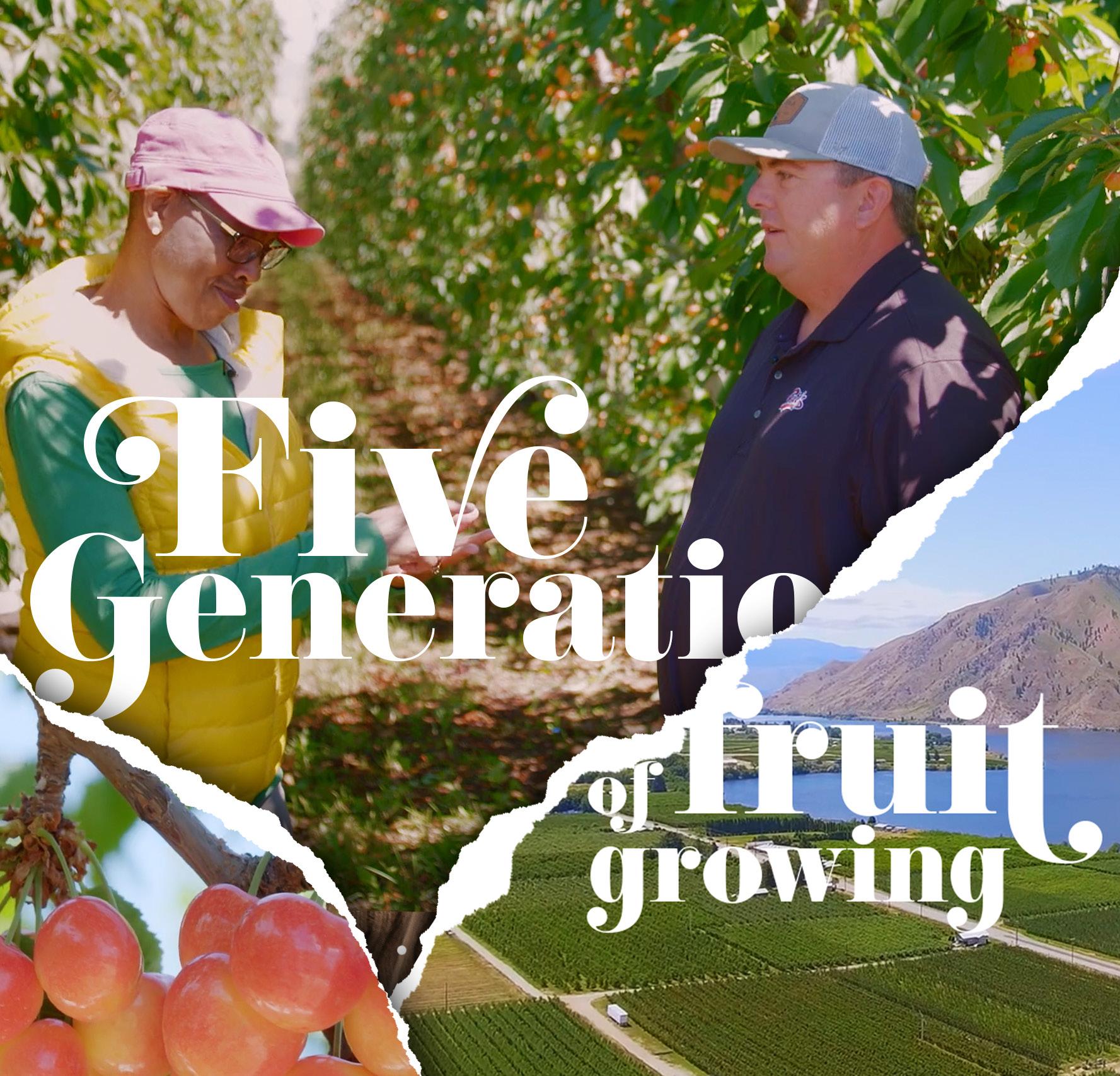


The Griggs family has been growing fruit on the banks of the Columbia River for more than 100 years.
IN THE TINY TOWN OF ORONDO, nestled beside the Columbia River with stunning views of the Cascades, a picturesque family farm has been cultivated and owned by the same family for five generations.
One summer day, rows of pear, apple, and cherry trees shimmered in the bright sunshine across Griggs Farms' nearly 300 acres. Standing in the shade of one of the cherry trees, CEO and General Manager John Griggs reflected on the farm's history, which his great-great-great-grandfather began as a homestead in the late 1800s.
"I'm born into it," Griggs said. "You want to be the one that can just keep passing it on. There's a lot of pressure, and there's not a lot of farms that are fifth generation — it's a long time."
Griggs counted on his fingers as he listed the cherry varieties growing on the farm, which include Tieton, Santina, Black Pearl, Skeena, Sweetheart, Rainier, Bing, and the farm's proprietary variety: the Orondo Ruby, which was discovered and patented by Griggs' father, Marcus.
WASHINGTON GROWN MAGAZINE JUNE 2024 7
GRIGGS FARMS ORONDO
"They're special," Griggs said. "It was just a chance mutation my dad saw driving around the blocks."
After patenting the cherry — which includes taking DNA samples to make sure it's actually a new variety — the family began cultivating the Orondo Ruby on the farm, which Griggs said now grows more than 80 acres of just that variety. The Orondo Ruby is said to be sweeter and more acidic than the Rainier cherry, another Washington variety, with smoother, firmer skin, and it stays fresh longer than the Bing cherry.
Whatever the variety, Griggs loves them all; cherries are one of his favorite fruits.
"I don't think anything really beats a good cherry," he said, adding that his personal favorite is the Bing, followed by the Rainier. "And I just like to eat them off the tree."
Cherries have a short growing season, and despite
so many technological advances in farming, they are still harvested by hand. Griggs said the farm employs 150 pickers to harvest the fruit when it is ripe, many of whom come back year after year. He said he wants to make sure the farm is still here for generations to come.
"Sustainability, to me, is being able to carry on generation to generation," he said. "We're good stewards of the land."
Griggs said Washington is a great place to grow cherries, partially because the state has so many microclimates.
"The weather here is great," he said. "We live in a rain shadow, so we don't get a lot of rain. We're on the Columbia River, so it keeps it a little bit cooler during the day, and there's not as much wind here. It's just a good place to grow."
And from good land and good climate come delicious cherries for a precious few weeks each summer.
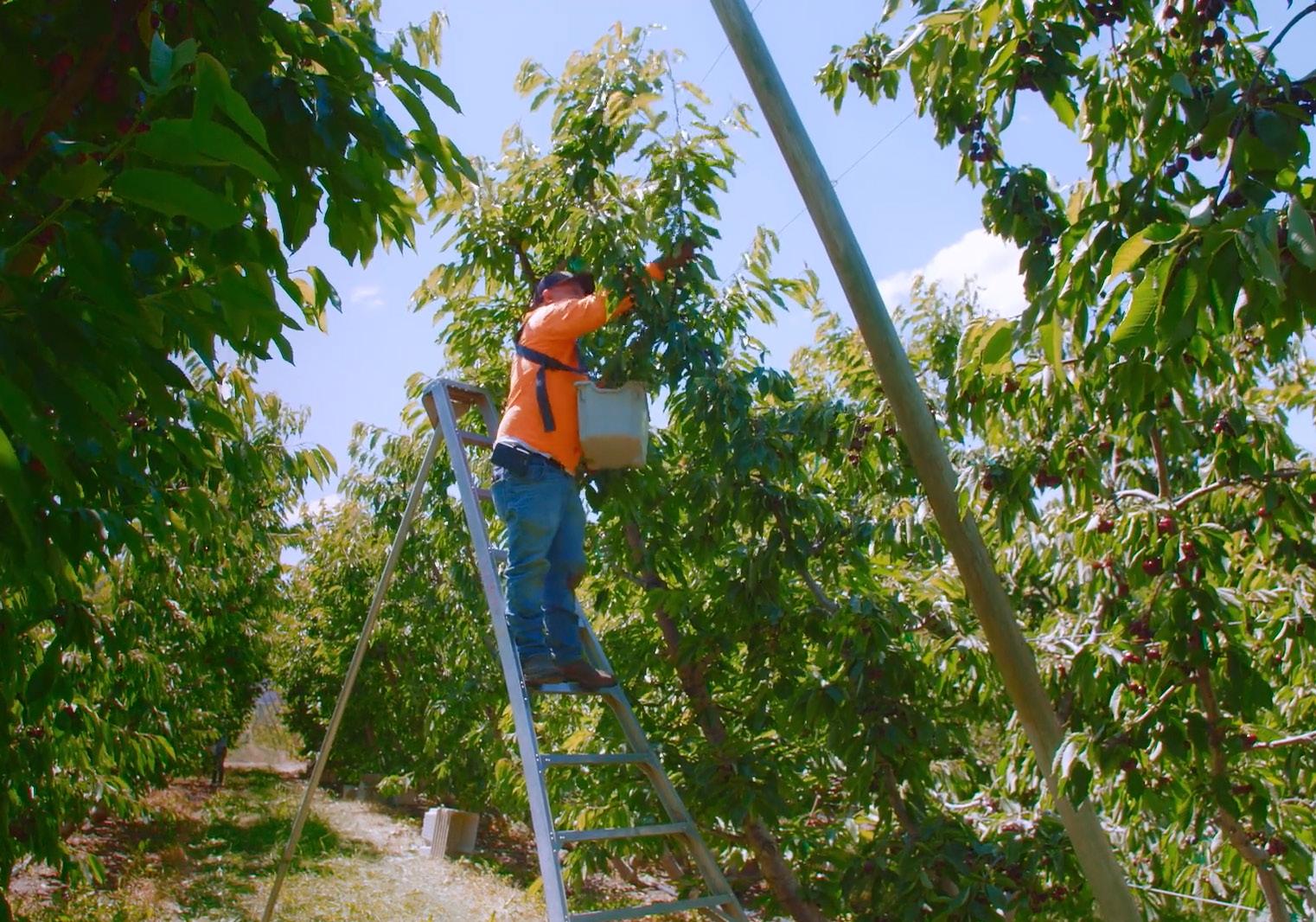
8 WASHINGTON GROWN MAGAZINE JUNE 2024




ENTER TO WIN!
Sign up to be entered into a drawing for a $25 gift certificate to Feast World Kitchen!
*Limit one entry per household

or
FEAST CHERRY FARMWORKER COLUMBIA BLUEBERRY CIRCUS VOLOVANES FRESH
The English word "cherry" derives from the French word "cherise." English speakers, hearing the word for the first time, misunderstood how it was spelled and assumed it was the plural for the fruit — which is why the terms "cherry" and "cherries" don't align in the two languages even to this day.
WASHINGTON GROWN MAGAZINE JUNE 2024 9
DID YOU KNOW?
sign up at www.wagrown.com/wa-grown-magazine
START FINISH GAME CORNER
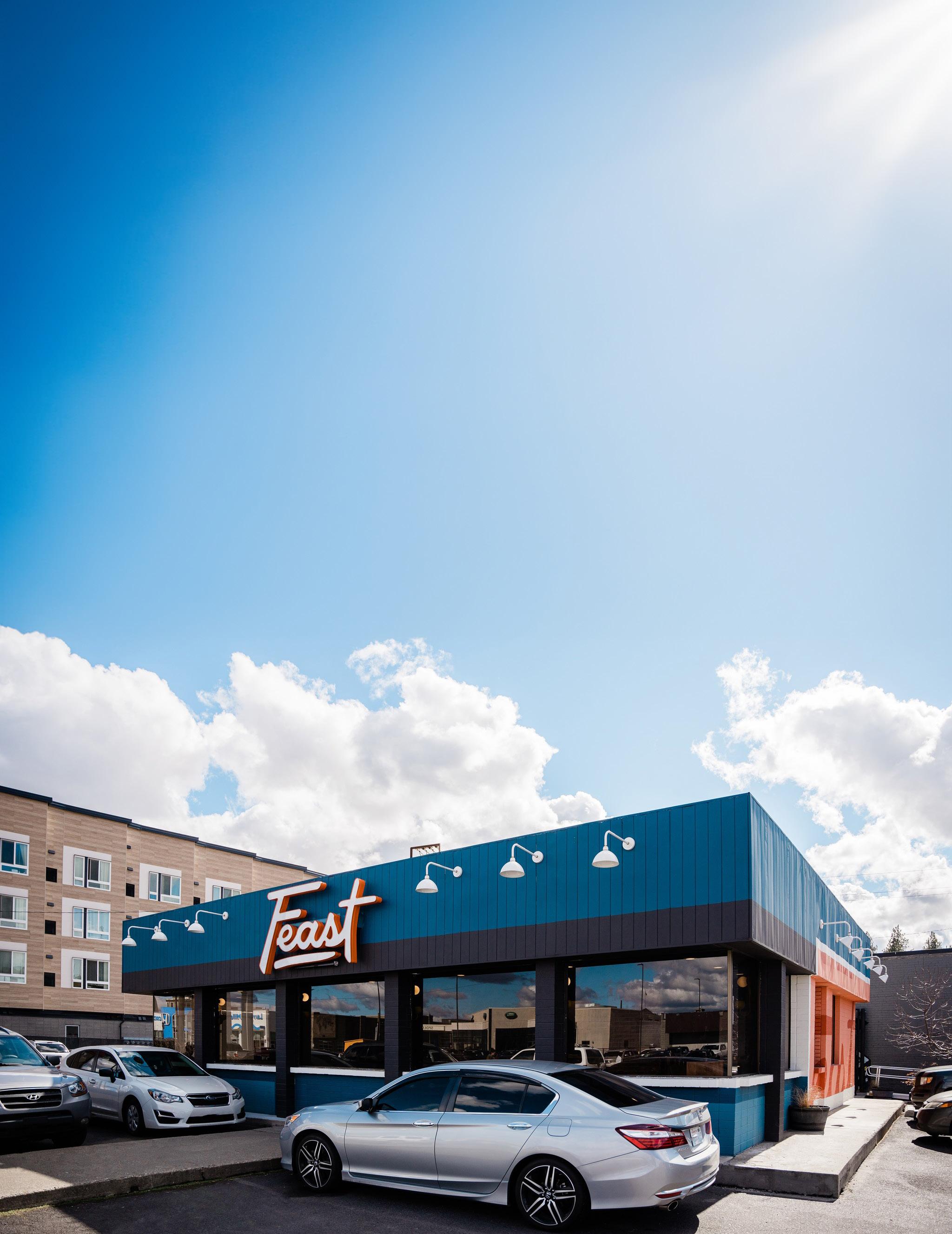
FEAST WORLD KITCHEN SPOKANE
FeastPreparefor a
The beloved Spokane nonprofit spotlights a different "International Chef Partner" every day – meaning that Spokane foodies get to try authentic cuisine from all around the globe, all under one roof.

AT
FEAST WORLD KITCHEN
in Spokane, Chef Maria Isabel Varela rolled out a ball of pastry dough, adding a thin layer of chilled butter and then folding it around itself.
"It's kind of like a diaper," said the chef, a mother of seven, with a laugh. She repeated this process five times before rolling out thin squares of dough and filling them with a mixture of sweet Washington-grown cherries, sugar, and lime.
Varela's homemade Mexican pastries, called volovanes, emerged from the oven crispy, flaky, and delicious, bursting with the tart sweetness of the cherries. Varela, who immigrated to the U.S. from Mexico, learned how to make the delicate volovanes from her mother before she died.
"I've been in the kitchen my whole life, since day one, because my mom was a chef," she said. "What I prepared today, that's something that I learned from her."
Varela was the featured chef when the Washington Grown team visited Feast World Kitchen in Season 11. The nonprofit restaurant features a rotating list of refugee and immigrant chefs, and so far, it has collaborated with about 100 chefs from all over the world.
"We covered five continents," said Maisa Abudahya, the co-executive director of Feast, who was an asylum seeker from Jordan. She said Feast was created to help talented chefs from other countries learn the business side of cooking and become entrepreneurs.
"Our mission in the beginning was to help those people open their businesses," she said,
"but we don't want to push anyone to this step until they are 100% ready for it."
Varela, who has cooked at Feast several times, said this was her ultimate plan as well.
"I would love to open a place," she said. "That's one of my goals."
According to its mission statement, Feast uses "international cuisine as a platform for economic resilience, holistic growth, and culture-sharing." Many of the people in leadership roles are former refugees and immigrants, and more than three-fourths of the restaurant's paid staff are people of color. Feast is dedicated to welcoming refugees and immigrants and helping them become community leaders, according to the restaurant.
"Feast is helping empower immigrants and refugees to feel at home in Spokane," said Sue Reidt, the chair of Feast's board, "to make a livelihood here, and to hopefully help them feel welcome through this community that we have through food and culture."
When Varela was the featured chef at Feast, customers couldn't say enough good things about her cooking — and her volovanes.
"It all goes together really nicely," said one diner. "It's a delight to eat."
Varela says you can taste when something is made from scratch, and it makes a difference.
"I think that's what makes it special and more fresh — and, you know, the love we put into it," she said. "Because I put in a lot of love when I bake, when I cook."
WASHINGTON GROWN MAGAZINE JUNE 2024 11

Cherry-Filled
Volovanes
12 WASHINGTON GROWN MAGAZINE JUNE 2024

FILLING INGREDIENTS
• 2 cups pitted cherries
• 1.5 cups sugar
• Juice of half a lime
• Pinch of salt
• 2 tablespoons cornstarch
PASTRY INGREDIENTS
• 4 cups flour
• 1 teaspoon salt
• 1 teaspoon sugar
• Juice of half a lime
• 1.5 cups of ice water
• 4 cups cold butter
• 2 eggs
• Extra flour, for surfaces
Complexity: Medium • Time: 2.5 hours
Chef Maria Isabel Varela, an International Chef Partner at Feast World Kitchen, shared this treasured family recipe with Washington Grown in Season 11! If you're in a rush, you can use premade puff pastry from the grocery store. But if you've got the time to make this homemade pastry, you'll be rewarded with a delicious, flaky pastry like no other.
Cherry Filling Recipe
Add cherries, sugar, lime juice, salt, and cornstarch to a saucepan over medium heat.
Bring the mixture to a boil, then reduce the heat to low and let the mixture cook for about 5-10 minutes, stirring frequently.
When the filling has thickened and the color has deepened from pink to a dark red, remove the filling from the heat and let cool.
Pastry Recipe
In a large bowl, mix flour with salt and sugar. Pour in lime juice and 1 cup of the ice water. Knead until the dough is smooth and homogenous, adding more water as needed, 1 tablespoon at a time. Rest for 30 minutes.
Roll the cold butter into a thin sheet, roughly 8"x5" (pro tip: roll it between layers of nonstick plastic or parchment paper so the butter all stays in one piece).
On a floured surface, roll the rested dough into a thin sheet, roughly 12"x10". Place the sheet of butter in the center and fold the edges of the dough over the top to completely

cover the butter. Cover and refrigerate for 20 minutes.
Remove the cool dough and roll it out on a floured surface until its size has roughly doubled, then fold it in half. Rotate the dough and fold it in half a second time. Cover and refrigerate for another 20 minutes.
Repeat the previous step four times to create thin, alternating layers of butter and dough.
On a floured surface, roll the dough out into a thin layer. Cut into small sheets (around 4"x6"). Place a few spoonfuls of cherry filling in the center of each small sheet of dough. Dip a finger in cold water and trace around the outside of the sheet of dough. Place another sheet of dough over top of the cherry filling and seal the edges of both sheets of dough together, forming a pocket.
Place the pastries on a baking sheet. Whisk eggs together with 2 tablespoons of water to make an egg wash. Brush the egg wash on top of the pastries, then sprinkle with sugar.
Bake for 10 minutes at 400 degrees, and serve warm.
WASHINGTON GROWN MAGAZINE JUNE 2024 13
Circus Coming" the " is
Because of their sterling reputation and limited availability, Washington cherries cause a fuss all around the world.

IT'S A FACT: THE WORLD LOVES WASHINGTON CHERRIES. Whether farm-fresh from the tree, baked into pastries, or dried into juicy gems, these tiny bursts of summer have developed a passionate following at home and abroad.
In fact, Washington is the top grower of sweet cherries in the country, and the state's farmers export about 25% of their cherries worldwide each year. Last year, Canada, South Korea, and Taiwan were the main consumers, according to the Washington State Department of Agriculture, and exports of fresh sweet cherries brought a total of $238 million to Washington. Thought the fruits range in hues from sun-gold and pink to deepest magenta, the color doesn't seem to matter to consumers: they want them all.
B.J. Thurlby, president of the Washington State Fruit Commission, said the state produces about 200,000 metric tons of cherries each year, and many factors make Washington a prime place for cherry farming.
"The cherries grown in Washington are unique," he said, "because we have such a wonderful high-nitrogen, mountainous region, and it's a unique microclimate."
Because cherries have an extremely short growing season, there's also a small window for them to be sold, said Willie Sosa, who works in export marketing and sales for Sage Fruit Company. This increases popularity but also puts pressure on the growers to make sure the fruits sell quickly.
"It's one of those commodities that you can still only
14 WASHINGTON GROWN MAGAZINE JUNE 2024
WASHINGTON CHERRY GROWERS

get a couple times out of the year," he said. "It's one of those things that you have to plan for, you know? You're not going to have it all season long, and people are waiting for them."
Juan Carlos Moreira, the Mexican representative for Washington Fruit Growers, said they created a public relations campaign in Mexico to declare the week of the Fourth of July to be Mexican Cherry Week.
"With Northwest cherries, we do the circus approach," he said. "The circus comes into town and stays in town for only a few weeks. With cherries, we're talking about from eight to 10 weeks a year. It's truly seasonal, so we have to tell everybody, 'The circus is coming! The circus is coming! Northwest cherries are going to be here!'"

At the Global Produce and Floral Show in Orlando, an importer from Taiwan named Panagiotis said he was there to find the best fruit from Washington.
"We don't have cherries in Taiwan, so we have to source from other places around the world," he said. "We find the cherries from Washington are one of the best in the world."
Thurlby of the Washington State Fruit Commission said Washington is an incredible state for agriculture in general.
"If you're the type of person who likes to have locally grown fruit, potatoes, produce, you're going to be really happy," he said, "because we grow the best in the world right here in our little corner of the world."
WASHINGTON GROWN MAGAZINE JUNE 2024 15
EL FAT CAT GRILL KENNEWICK
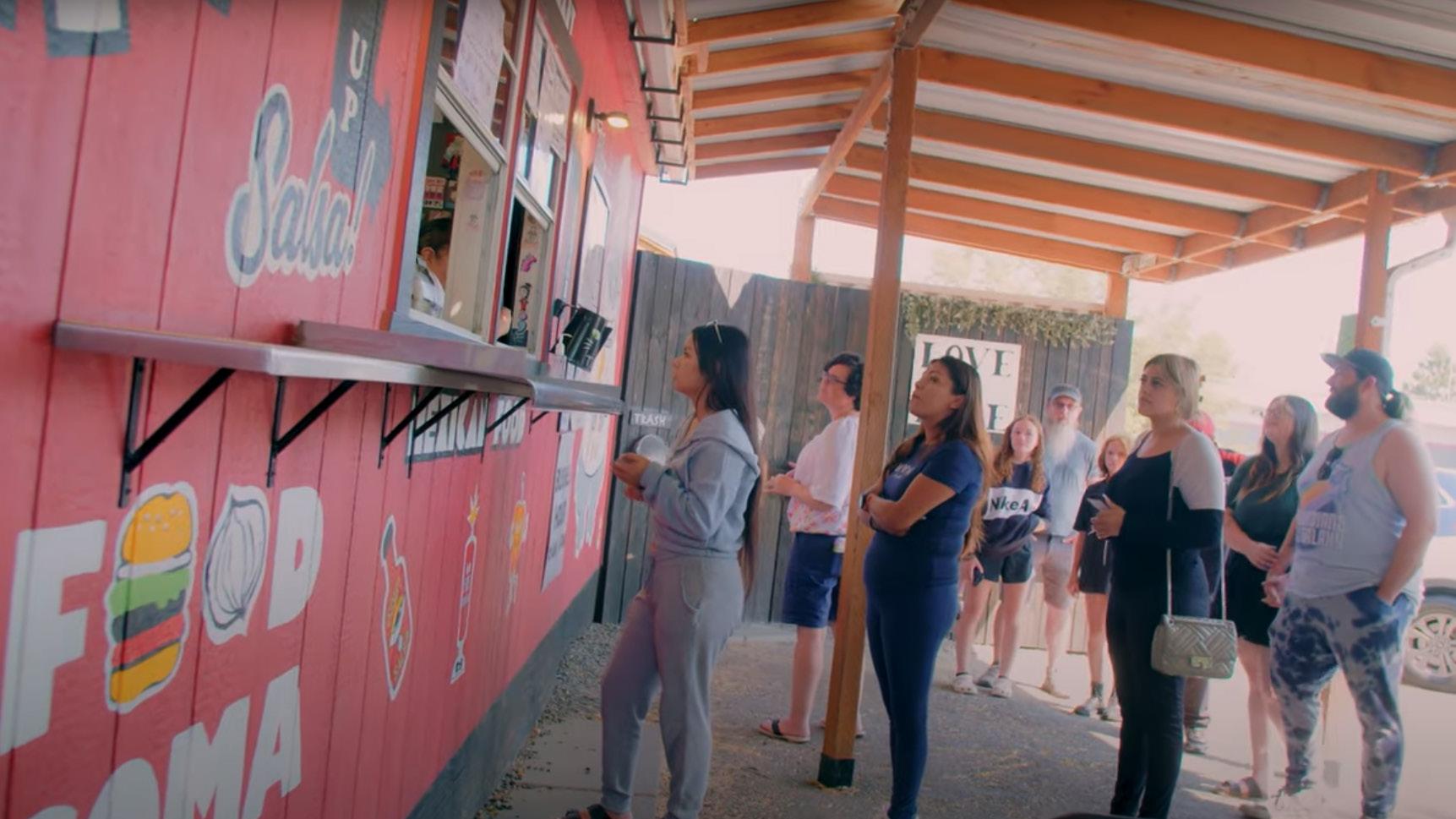
Is this the
Best Food Truck in Washington?
Mexican fusion. Asian curries. Shrimp-mango ceviche. Delicious burgers. For a tiny food truck, El Fat Cat Grill in Kennewick punches way above its weight – and just might be one of the most delicious and inventive dining experiences in the state.
Owner Felix Sanchez and his wife and business partner Jenny have won "Food Truck of the Year" in the Tri-Cities – 11 years in a row. Last year, they were named the "Best Burrito in Washington" by the editorial board at Yelp. The food options are eclectic, ranging from gigantic HabaYaki burritos (mixing habanero and teriyaki flavors) to Coco-Curry (coconut, chicken and vegetables stir fried in yellow curry) to seven custom salsas (make sure to try the pineapple salsa and the firecracker salsa). Felix and his team take pride in using local ingredients to create bold, inventive flavors.
"In Washington, we're known for cherries and apples," said Felix. "I live out in the country, so I'm surrounded by cherry and apple farms. As soon as harvest comes, it's like, 'let's go!'"
All their foods are made from scratch daily, and though they've never done any advertising, their reputation around the Tri-Cities means there are always lines. When the Washington Grown crew visited in Season 11, the specialty of the day was a pulled pork adobado torta, topped with a Bing cherry mole and a Granny Smith apple slaw made with local fruit.
"It's the perfect mix with the meat and the sweetness of the fruit," said one customer. "The smoky flavor from the pulled pork – I'd order two of these if I could."

The Washington Grown project is made possible by the Washington State Department of Agriculture and the USDA Specialty Crop Block Grant program, through a partnership with the state's farmers.
Marketing Director
Brandy Tucker
Editor-in-Chief
Kara Rowe
Editor and Art Designer
Jon Schuler
Assistant Editors
Trista Crossley
Elissa Sweet
Elissa Sweet
Images
Jon Schuler
Feast
Shutterstock
Executive
David
Producer

Kristi Gorenson
Tomás Guzmán
Val Thomas-Matson
Writers Jon Schuler
Tomás
Guzmán
World Kitchen
Washington
Grown
Producers
Kara Rowe
Tanner Chris Voigt
Ian Loe Hosts




























